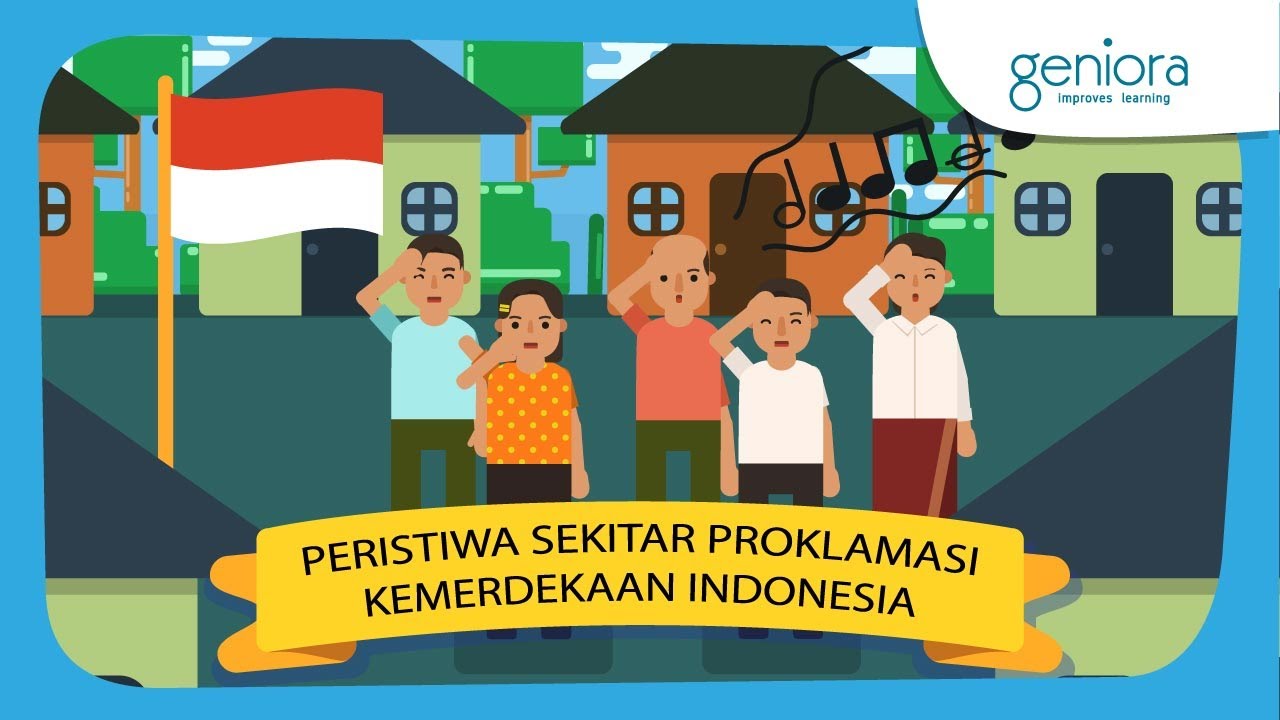PENDUDUKAN JEPANG DI INDONESIA | PART 2: RESPON TERHADAP KEDATANGAN JEPANG (PROPAGANDA, 3A, PUTERA)
Summary
TLDRThe script discusses the period following the Dutch defeat in the Pacific War and the subsequent Japanese occupation of Indonesia. Japan, presenting itself as a liberator, promised independence to the Indonesian people, which was initially welcomed with optimism. Japan divided Indonesia into military zones and used propaganda to foster a sense of unity and hope for Asian liberation. Key Indonesian figures like Soekarno and Hatta were involved in Japanese-controlled organizations, while secretly promoting nationalism and preparing for Indonesia's true independence.
Takeaways
- 😀 Japan's occupation of Indonesia began after the fall of Dutch power in the Greater East Asia War.
- 😀 On March 8, 1942, the Dutch surrendered to Japan at Kalijati, marking a new chapter in Indonesia's colonization.
- 😀 Japan divided Indonesia into three military zones: Sumatra, Java and Madura, and other regions under the Navy's supervision.
- 😀 Japan presented itself as a liberator, promising freedom from Western colonialism, which initially attracted Indonesians.
- 😀 Japanese propaganda emphasized 'Asia for Asia' and the Greater East Asia Co-Prosperity Sphere to gain Indonesian support.
- 😀 The 3A movement was established in April 1942 to promote Japanese ideals and strengthen ties with the Indonesian people.
- 😀 In 1943, Japan formed the Putera organization, involving respected national figures like Sukarno, Hatta, and Ki Hajar Dewantara.
- 😀 The Indonesian national leaders used their involvement in Putera to advance their own hidden agenda for Indonesia’s independence.
- 😀 The nationalist leaders aimed to foster national pride and independence while preparing Indonesians for the eventual goal of freedom.
- 😀 The collaboration of national leaders with Japan was a tactical move to spread nationalism and push towards Indonesia's independence.
Q & A
What event marked the beginning of a new chapter in Indonesia's history under Japanese occupation?
-The beginning of a new chapter in Indonesia's history under Japanese occupation started after the Netherlands surrendered unconditionally to Japan on March 8, 1942, in Kalijati, Subang, West Java.
How did Japan organize its military control over Indonesia after the conquest?
-Japan divided Indonesia into three main military zones: Sumatra was controlled by the 25th Army, Java and Madura by the 16th Army, and other regions like Borneo, Sulawesi, and Papua were under the supervision of the Japanese Navy.
What was the initial response of the Indonesian people to Japan's arrival?
-Initially, many Indonesians welcomed Japan with optimism, as Japanese propaganda promised independence and the liberation of Indonesia from Dutch colonial rule.
What propaganda slogan did Japan use to gain the support of the Indonesian people?
-Japan used the slogan 'Asia for Asia' and 'Greater East Asia Co-Prosperity Sphere' to gain the support of the Indonesian people.
What was the purpose behind the formation of the 3A Movement by Japan?
-The 3A Movement was established by Japan in April 1942 as part of a propaganda effort to portray Japan as the liberator of Asia from Western colonialism, aiming to gain the loyalty of the Indonesian people.
What role did prominent Indonesian leaders play in Japan's strategy during the occupation?
-Prominent Indonesian leaders, such as Sukarno, Mohammad Hatta, Ki Hajar Dewantara, and others, were involved in the formation of the Putra organization, which Japan hoped would foster emotional closeness with the Indonesian people and support their colonial agenda.
What was the hidden agenda of the Indonesian leaders within the Putra organization?
-The Indonesian leaders involved in Putra had a hidden agenda to strengthen the spirit of nationalism, spread ideas of independence, and prepare the people for the ultimate goal of Indonesia's freedom.
What was Japan's main claim to legitimacy in its occupation of Indonesia?
-Japan claimed legitimacy in its occupation of Indonesia by positioning itself as a liberator of Asia from Western colonial powers, promoting the idea of Asian solidarity under Japanese leadership.
How did the Japanese occupation impact the Indonesian nationalist movement?
-The Japanese occupation, despite its intentions to control and exploit Indonesia, inadvertently helped fuel the nationalist movement by fostering a sense of unity and preparing the people for the idea of independence.
What was the significance of Sukarno and Hatta's involvement with the Japanese during the occupation?
-Sukarno and Hatta's involvement with the Japanese was significant because, while they engaged with the occupiers, they used their positions to strengthen the nationalist sentiment and push toward Indonesia's independence, laying the groundwork for future independence movements.
Outlines

Этот раздел доступен только подписчикам платных тарифов. Пожалуйста, перейдите на платный тариф для доступа.
Перейти на платный тарифMindmap

Этот раздел доступен только подписчикам платных тарифов. Пожалуйста, перейдите на платный тариф для доступа.
Перейти на платный тарифKeywords

Этот раздел доступен только подписчикам платных тарифов. Пожалуйста, перейдите на платный тариф для доступа.
Перейти на платный тарифHighlights

Этот раздел доступен только подписчикам платных тарифов. Пожалуйста, перейдите на платный тариф для доступа.
Перейти на платный тарифTranscripts

Этот раздел доступен только подписчикам платных тарифов. Пожалуйста, перейдите на платный тариф для доступа.
Перейти на платный тарифПосмотреть больше похожих видео

Sejarah Indonesia Kelas XI - Dari Rengas Dengklok ke Pegangsaan Timur || Seri Pembelajaran Daring

History of Japanese Arrival to Indonesia

The Battle of Java Sea 1942 | Who's the winner?

PERANG DUNIA DI INDONESIA - Kedatangan Jepang di Indonesia

BAB 3 Di Bawah Tirani Jepang

Peristiwa Sekitar Proklamasi Kemerdekaan Indonesia - Part 1 | IPS | SayaBisa
5.0 / 5 (0 votes)
